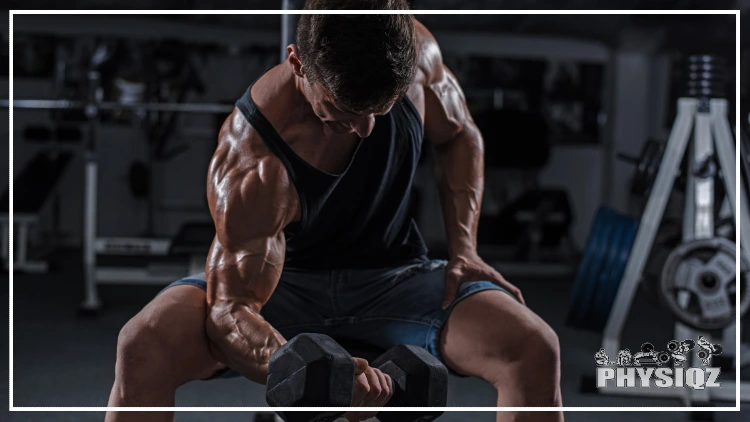
When doing a bicep curl, wrist twitches or spasms can be a huge concern and this is especially true if you can’t figure out why it won’t stop twitching after a workout.1
Thoughts such as what’s the cause, is a muscle torn, and is it okay to continue curling despite a wrist twitch that may or may not be painful.
The good news is that a wrist twitch is usually not that serious and more than likely, the lifter has either overworked their muscles, needs to rehydrate, or may have potentially pulled their muscle.
The bad news is that a rest and a change of exercises is needed. And if it progresses, a medical professionals opinion should be sought.
To better understand why a bicep is twitching or spasming, gym goers should understand the difference between a wrist twitch and a bicep spasm, the causes of each, how to avoid it and when it’s time to see a doctor.
Wrist Twitching & Beyond: What Does Muscle Twitching After Workout Mean?
There are a few common reasons why a person’s wrist may be twitching after a workout.
Strain
When a muscle twitch happens after a hard workout, it typically means that the muscle has been strained too heavily.
In this situation, the muscle’s nerves are acting on their own because they have been broken down during the exercise. These nerves, or nociceptors, become hyperexcitable after working out, leading to over-sensitization and potentially twitching or spasming.2
This can cause a fasciculation, a muscle spasm, that makes the muscle twitch or contract in an uncontrolled way. This type of twitching is usually not extremely painful, but it is an uncomfortable sensation.
The good news is that this type of twitching usually subsides on its own within a few hours after the workout and is not a sign of any serious injury.
Dehydration & Lack of Nutrients
Muscle twitching after a workout could also suggest that pre-workout rituals that would allow the muscles not to twitch were not followed. Said in plainer terms, if a person had too much caffeine before a workout or didn’t have enough rest between their previous workout and now, then their muscles are more likely to twitch post-workout.
A simple solution to this, in the future, is to ensure that caffeine intake pre-workout is limited; pre-workouts typically contain a huge amount of caffeine which can ultimately be dangerous to couple up with working out; research shows that consumption of greater than 400mg and 300mg for men and women respectively can lead to negative effects on cardiovascular health and bone status, so being aware of the amount in one’s pre-workout is important.3
Or, a simpler solution could simply be to focus on rehydrating with proper electrolytes, like Propel water or Gatorade. Typically, when muscle fibers get strained, a person’s heart rate elevates, leading to a greater amount of sweating.
Through sweat, electrolytes exit the body’s closed system, leading to a deficiency in crucial minerals like magnesium, calcium, and sodium. Without these electrolytes in proper ratios in the body, muscle twitches can easily occur. Propel Water and Gatorade Zero are excellent choices as sports drinks to replenish electrolytes, which can be beneficial for weight loss goals.
So, to sum things up, for those who have twitching muscles after a workout – rehydrating properly should safely stop the muscle twitching, but if it continues afterward, consider seeing a medical health professional. Regardless, hydration is a key part of maintaining any progressive overload workout plan.
An Exercise Might Not Be Ideal for Your Anatomy
An individual’s anatomy is something that is very difficult to classify, making it hard to offer a blanket solution to specific types of body structures.
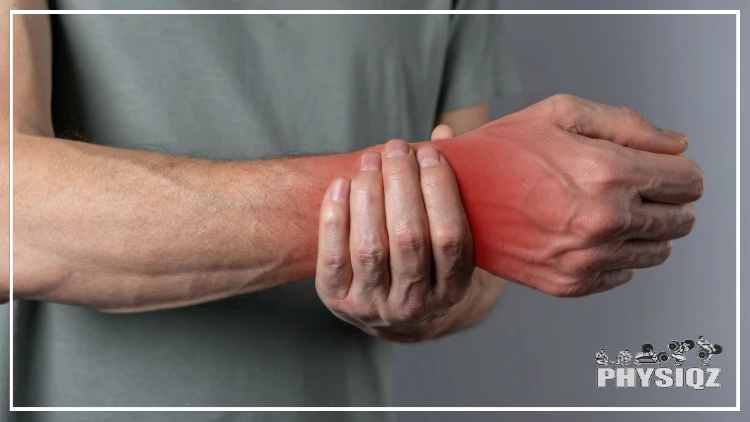
Source: Изображения пользователя SuprV via Canva.com4
That being said, anatomy is important to keep in mind when thinking about muscle twitching because for some individuals, certain types of bicep curls may feel great, while others may hurt their wrist or make it spasm. Switching the type of curl being performed is the best way to counter this issue.
Regardless, a person’s anatomy cannot be changed. Bad bicep genetics, or biceps that require a specific type of training to feel ‘good’, are something a person is born with and as such, it is something that must be trained around.
Rest Is Needed
If a person’s wrist or muscle is twitching post-workout, one of the most likely reasons it stems from is a lack of rest. Perhaps the lifter has performed bicep curls every day for a week straight, or maybe they didn’t get much sleep the night before.
Either way, without giving the body time to recover and heal from previous workouts, muscle spasms can occur.
The Different Types of Arm Muscle Spasms From Overtraining
Muscle spasms, as aforementioned, are a bit different from a typical muscle twitch. Spasming usually involves the entire muscle seizing up and contracting involuntarily, seemingly at random, while muscle twitching may feel like a very slight ‘flex’ of the muscle.
To distinguish the difference between these two things even further, let’s discuss the different types of arm muscle spasms that can occur.
Twitching From the Bicep Curl (Wrist Twitch)
The most common muscle spasm after an exercise involving the bicep curl is a wrist twitch. This typically occurs when the lifter has put too much strain on their forearm muscles during the exercise and they have not properly stretched and cooled down afterward.
Considering massages offer the benefit of psychological relaxation and reduce the severity of muscle soreness, stretching, at a minimum, should be a given post-workout.5
The wrist twitch is often accompanied by a sharp pain in the wrist and forearm area. The muscles underneath the skin may also appear to be painfully swollen as if they are being pulled from the inside, but more often than not, the forearm will not look different.
The main thing to look out for here to understand if a person had a bicep curl wrist twitch is to see how their wrist feels.
If the wrist aches slightly when lifting weights, there is likely a bit of overtraining of the muscles inserted through the wrist. If there is a sharp pain that occurs every time a weight is picked up, there may be further issues, but more often than not, a wrist twitch is simply because the forearm muscles have been overtrained without ample stretching or recovery.
To avoid this type of muscle spasm, make sure to not overtrain the bicep or forearm muscles during a workout, and always make sure to properly stretch the arms out afterward to allow for ample blood flow back into the muscle.
Proper forearm stretching is very easy to perform – simply flex the wrist as if a person is holding their hand up in a ‘stop’ motion, and gently pull on the tips of the fingers back towards the body with the other hand. This should elicit a pulling sensation along the wrist.
Reversing the hand 180 degrees, bending downwards at a right angle rather than upwards, and pulling the fingers gently again will have a similar effect, but this will stretch different muscles within the forearm.
Engaging in this activity after an arm workout can be very beneficial to prevent overtraining, improve blood flow to essential areas, and, along with proper hydration, help reduce wrist twitching from bicep curls quickly.
Twitching in Right Bicep or General Cramps/Muscle Spasm (Bicep)
Muscle spasms in the bicep are often more severe than the wrist twitch described above.
Generally speaking, when a bicep muscle spasms, it will feel like an entire area of the arm has become rigid and is unable to move for a few seconds at a time. The pain associated with this type of spasm is usually a burning sensation that radiates outwards from the muscle itself.
Bicep spasms are a bit different than muscle spasms in different parts of the body, though. Since the bicep is such a small muscle group, it is typically quite easy to target the overly tense area, whereas when the leg muscles are spasming, for example, it is a lot more difficult to get them to relax since they are a much larger muscle group.
When legs spasm, the entire thigh – the quadriceps, the hamstrings, and the glutes – and even the calves may be tensing up. This is a huge amount of muscle to force to forcibly relax and will take a lot more effort than relaxing the bicep during a muscle spasm.
To reduce the chance of experiencing this type of muscle spasm, be sure to always stretch and cool down after a workout. Anecdotally, stretching after a workout feels great and provides a lot of blood flow to different parts of the body, but current research doesn’t prove or disprove if post-workout stretching is actually beneficial.6
Additionally, using lighter weights than normal, as well as shorter repetitions, can also help reduce the risk of experiencing serious bicep spasms. This tip is less based on research, and more based on logic; if a muscle is spasming, that likely means that it is being overused or isn’t being properly fueled by food or water.
Using lighter weights and shortening the time that repetitions last will allow the muscles to undergo less stimulus, while still allowing them to get some kind of workout in. This offers the benefit of still stimulating the bicep, drawing blood flow to the area, while not necessarily ‘destroying’ the muscle.
Some people may also notice that their dominant or non-dominant arm seems to spasm more than the other arm. This will occur on a case-by-case basis, and it seems like the only real evidence if anecdotal discussion from Reddit is ‘real evidence’, is that whichever arm a person uses more, that arm is more likely to spasm.
For example, if a person uses their dominant arm to carry groceries, put their shoes on, open doors, carry their suitcase, and other things, then that arm will obviously have a bit more time that it is being used for, and thus, be more likely to spasm. But it can also happen in the reverse – the non-dominant arm could be used for these things, and then that arm will be more likely to spasm.
It does not seem like there is a more common arm that spasms more frequently; it is solely based on the individual.
The main takeaway from this is that developing a good balance of allowing both arms to take on some of the burdens of day-to-day life will hopefully help to prevent bicep spasms.
Persistent Bicep Twitching: Understanding the Causes
Bicep muscle spasms can be caused by a variety of things, but one of the most common reasons is overtraining.
When a person works out a muscle group too much, the muscles can become fatigued and overused. This can lead to involuntary contractions or spasms in the muscles.
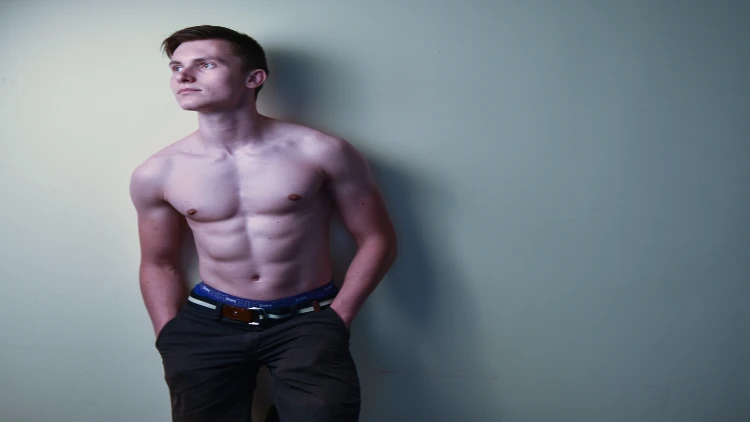
Source: Pexels–2286921 via Canva.com7
This is typically because the nerves in the muscles are being stimulated at such a frequent rate that they are being ‘burnt out’ in a certain manner. Research shows that the best way to determine if a person is recovered from a workout is to determine their parasympathetic power, or heart rate variability (HRV), as it can easily reflect the status of a weightlifter’s recovery.8
It is entirely possible for a muscle to be recovered after training, but for the nerves not to be. Think about it this way: when performing heavy squats, say for sets of 2 to 3 reps, a person’s central nervous system (CNS) is extremely fatigued afterward.
It is very difficult for them to perform other exercises, even if they are light because their nerves have been severely fatigued.
This same thing occurs for other muscles in the body, including the biceps; even if the bicep muscle has recovered in between workouts, the nerves in the bicep itself may be broken down or even need more time to recover than they were allowed to have.
Another reason a person’s biceps might be twitching is that they are not giving them enough time to recover between workouts. When they don’t give their muscles enough time to rest, the muscles can become tired and overworked, which can lead to spasms.
Ultimately, there is a simple solution here: get proper sleep and allow there to be a few days before working out the same muscle group. This will give the body and the muscles in the body time to relax in between workouts, preventing the nerves from being overstimulated and giving the muscle fibers some space to ‘breathe’.
What To Do If Your Bicep Won’t Stop Twitching
Bicep curls are obviously part of most beginner hypertrophy programs, and as such, it is necessary for beginners to determine if part of their bicep training is going wrong when performing curls.
If a person has followed the above advice, including rehydrating, getting proper sleep, resting in between workouts, and even lowering the number of repetitions they are performing, and their bicep still won’t stop twitching, there are a few other things to try out to stop it from happening..
Use a Different Grip To Avoid Wrist Pain When Curling
If you’re curious about why your forearm hurts during curls, it might be due to weak wrists in a specific position. To avoid this, try using a different grip when doing bicep curls. To begin discussing this, let’s look at dumbbells as an example.
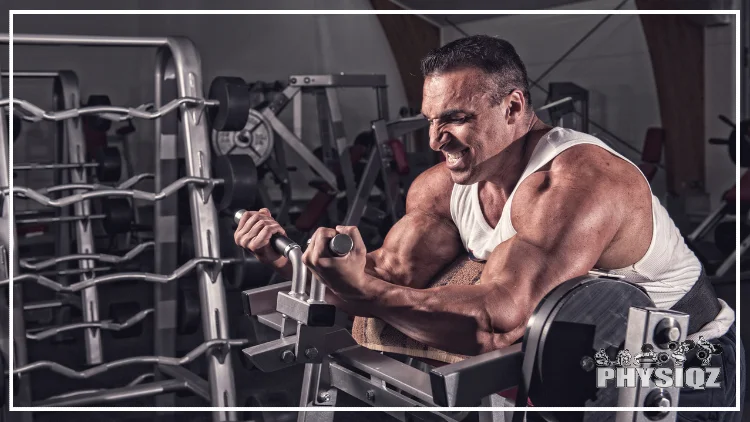
Source: MRBIG_PHOTOGRAPHY via Canva.com9
When performing a bicep curl with dumbbells, some people may find that having their arms supinated (underhand-palm up) or pronated (overhand-palms down) is more comfortable, while others still will find that a neutral grip will be the most comfortable. Each of these types of bicep curls, supinated, pronated, and neutral, will all target the bicep effectively but may feel more comfortable for people with different bone or muscle structures.
Toying around with the different bicep curl variations that one performs is the best plan of action here – without personal experimentation, it is nearly impossible to say what will be ‘best’ for one individual over another.
Try Sitting Down
This may seem like a silly answer, but in reality, for all those people who solely focus on performing standing bicep curls, bicep curl wrist twitching can easily occur while standing because the arms are less ‘locked’ into place, whereas when sitting, the arms are a bit more set into the position they can reside within.
Here, because of this fact, the lifter can solely focus on lifting the weight using their biceps, avoiding doing things that may be made for the musculature like excessively swinging the weight or ignoring form in general.
Switch to a Cable Machine
Finally, switching to a cable machine can help people who experience wrist twitching during bicep curls.

Source: Pavel-Jurca on Pixabay10
With a dumbbell or barbell, the weight curve gets more difficult as the weight is raised higher and higher, meaning it is easier at the bottom and the end of the movement.
This might lead a lifter to overestimate their ability to lift heavier weights, as they can manage the lower part of the curl but struggle with the upper portion. This discrepancy can be significant.
On the cable machine, the weight curve is very different. Throughout each portion of the movement, as long as the pulley is activated, the weight will be the same all throughout the movement, meaning that the difficulty when performing the bicep curl at the bottom of the movement will be the same as at the top.
This forces lifters to humble themselves and to only lift weights that they can control during all portions of the movement: the beginning, the concentric, the eccentric, and the very end.
Due to the humbling nature of the cable machine, ‘proper’ weights for the individual must be used; otherwise, they literally will not be able to lift the weight with the biceps. If they can lift the weight, then it is likely the bicep is taking on the majority of the work in a cable curl, and the wrist will not have to be put under more strain.
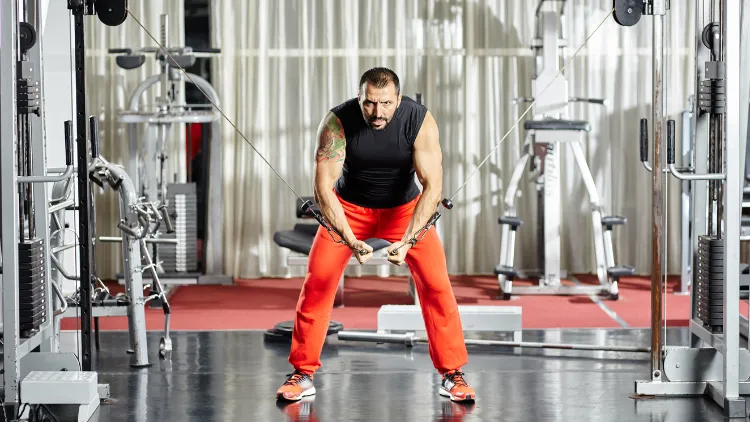
Source: Slatan via Canva.com11
For other movements, like the bench press or back squats, this is not the case.
For example, the squat bar path moves directly up and down, so the weight is not changing location, unlike in the dumbbell curl, where the weight is moving up and out, away from the body. The same can be said for the bench press bar path.
Other Common Ways To Avoid Bicep Twitching
Other than switching to a cable machine, sitting down, and changing grip width, there are quite a few other ways to minimize bicep twitching when curling.
Warm-up: Many people, especially younger lifters, do not truly understand how important warming up is for weightlifting. While a 20-year-old can go into the gym and perform a top set of squats after 1 or 2 warmup sets, a 30-year-old lifter requires significantly more time to warm up and ensure that they can lift the weight safely.
In regards to bicep exercises, all this means is to perform 1 to 2 sets of light curls to get blood flow to the muscle. Or, another popular method is to use a lacrosse ball to rid the bicep of any knots or discomfort; this is known as myofascial release.
Drop the ego: This tip has two parts: the first is to drop the weight to a weight that can be properly controlled by the lifter. Without using the correct weight for what can be performed using good form, only the ego is really being trained.
The second part of this should be obvious now; use good form. Dropping the weight and maintaining good, controlled form will enhance bicep contractions and help prevent wrist twitching during bicep curls.
Rest and nutrition: As aforementioned, proper rest is one of the most important things to keep in mind when on a consistent weightlifting routine.
Getting enough sleep is crucial to repairing microtears in muscles, and adequate nutrient intake is also important. Consuming crucial minerals like magnesium and sodium, the two main electrolytes, will ensure that a person is properly hydrated through each workout.
This will help to provide the body with enough fuel to keep going through a workout, and it will also allow the biceps to keep contracting efficiently. If it feels like sleep and electrolytes aren’t enough to get through a workout, one could experiment with small amounts of caffeine as a pre-workout, but it is inadvisable to use large amounts to ‘get through’.
Vary the types of weights: Cable machines were mentioned above, but it should be noted that there are many other ways to vary the weights used when performing bicep curls.
Using barbells, dumbbells, EZ-bars, and even machines can all be beneficial when trying to grow the bicep. Each individual’s arms will respond differently to different types of stimulus, so determining the type of weight that is best for one lifter is key to maximizing their workout efficiency.
Vary the type of curl: This may be intuitive to some, but switching the curl variation being used would be a great way to see if the bicep curl itself is the issue. Different curl variations will target different parts of the upper arm due to the positioning of the elbow.
For instance, the reverse curl emphasizes the forearm muscles, whereas the incline dumbbell curl focuses on the long head of the bicep. Play around with the curl variation performed to see if that helps with any wrist pain.
Try variations with an ez bar, dumbbells, barbells and change try different elbow placements too such as in front of you in preacher curls or next to you in decline curls.
See a physical therapist: This should be a last resort, as more often than not, minor joint pains like tennis elbow or wrist twitches can be solved by adjusting some part of training. But, if all else fails, talk to a physical therapist to see if there are specific exercises that can help to rehabilitate the wrist or bicep itself.
Muscle spasms are generally a sign that a muscle is being overworked and proper hydration is not taking place. In order to avoid bicep curl wrist twitching in the future, taking into account that sleep, rest, and electrolytes like calcium, sodium, potassium, and magnesium are extremely important in the recovery process will be crucial for lifters to avoid and even prevent muscle twitching from occurring in the future.
Frequently Asked Questions
Why Is My Right Bicep Twitching For Days On End?
If a person’s right bicep has been twitching for days on end, it is likely due to the fact that they may be overtraining, using too much weight when performing the bicep curl, or are not properly rehydrating after a workout. To properly address this, it is important to rest in between workouts and lower the amount of weight that is being used.
What Should I Do For My Bicep Muscle Twitching All Day?
If a person’s bicep is twitching all day, it could be due to overtraining or possibly dehydration. To address this, it is important to make sure that enough rest days (at least one day of rest in between workouts) are taken, and that proper hydration is achieved.
Should I Be Concerned About a Bicep Curl Wrist Twitch?
When your wrist spasms or twitches from doing bicep curls there shouldn’t be a huge concern unless it’s painful. Typically there’s ways such as changing exercises or resting to mitigate the twitching but if it persists or becomes painful then a medical professionals advise should be sought — specifically a sports physical therapist.
References
1bondarchik. Canva. Accessed 19 April 2023. <https://www.canva.com/photos/MADBQJXsZas-bodybuilder-in-the-gym/>
2Mense, S. (2008). Muscle Pain: Mechanisms and Clinical Significance. Deutches Arzteblatt International, 105(12), 214-219. <https://www.ncbi.nlm.nih.gov/pmc/articles/PMC2696782/>
3Nawrot, P., Jordan, S., Eastwood, J., Rotstein, J., Hugenholtz, A., & Feeley, M. (2003). Effects of caffeine on human health. Food Additives & Contaminants, 20(1), 1-30. <https://pubmed.ncbi.nlm.nih.gov/12519715/>
4Изображения пользователя SuprV. Canva. Accessed 19 April 2023. <https://www.canva.com/photos/MAE8twHqkTo-wrist-pain-man-hand-closeup-holding-painful-wrist-health-c/>
5Weerapong, P., Hume, P., & Kolt, G. (2005). The mechanisms of massage and effects on performance, muscle recovery and injury prevention. Sports Medicine, 35(3), 235-56. <https://pubmed.ncbi.nlm.nih.gov/15730338/>
6Alfonso, J., Clemente, F., Nakamura, F., Morouco, P., Sarmento, H., Inman, R., & Ramirez-Campillo, R. (2021). The Effectiveness of Post-exercise Stretching in Short-Term and Delayed Recovery of Strength, Range of Motion and Delayed Onset Muscle Soreness: A Systematic Review and Meta-Analysis of Randomized Controlled Trials. Frontiers in Physiology, 12. <https://pubmed.ncbi.nlm.nih.gov/34025459/>
7Pexels–2286921. Canva. Accessed 19 April 2023. <https://www.canva.com/photos/MADQ45oohHU-healthy-fit-handsome-guy/>
8Chen, J.-L., Yeh, D.-P., Lee, J.-P., Chen, C.-Y., Huang, C.-Y., Lee, S.-D., Chen, C.-C., Kuo, T., Kao, C.-L., & Kuo, C.-H. (2011). Parasympathetic nervous activity mirrors recovery status in weightlifting performance after training. Journal of Strength and Conditioning Research, 25(6), 1546-52. <https://pubmed.ncbi.nlm.nih.gov/21273908/>
9MRBIG_PHOTOGRAPHY. Canva. Accessed 19 April 2023. <https://www.canva.com/photos/MAEEXZoXVWw-machine-bicep-curls/>
10Jurča, Pavel. “Fitness Man Boy – Free photo on Pixabay.” Pixabay, 18 July 2018. Accessed 19 April 2023. <https://pixabay.com/photos/fitness-man-boy-back-3545063/>
11Slatan. Canva. Accessed 19 April 2023. <https://www.canva.com/photos/MABHBUiE_co-triceps-workout-at-cable-machine/>